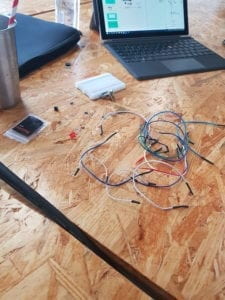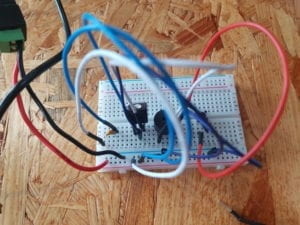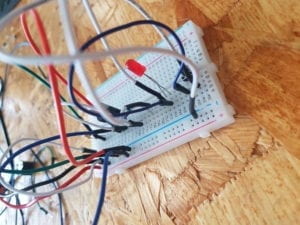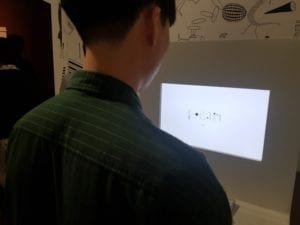By reading “The Art of Interactive Design”, I started to think carefully about the definition of the term, “interactivity”. So far, I merely thought of the term interactivity as the way an item can meet the user’s need, which I still believe to be similar to the definition that the author has provided, however, found out the difference between my definition with that of the author.
My definition is missing the alternating part. In order for an item or a live being to meet the author’s definition, an item and a live being must alternately show a result that meets each other’s need.
I understand what the author means by that we are losing track of what the interactivity means.
This week, during the recitation session, I and my partner Abby built an electric circuits. We have built three types of circuits.

Using the above materials, we have built



above three circuits. As I and my partner, Abby, pressed on the switch the circuits performed by making a beeping sound or turning on the light bulb, and changed the amount of light of the light bulb by us turning the wheel. These output followed our expectation, which definitely proves these circuits to be an interactive since the circuit processed and outputted the action that meets our expectation after our inputted action of pressing the button or turning the wheel.
To go further, I know that the circuit we built only has a shallow amount of interaction. For example, the eye tagger that the Zack Lieberman and his fellow team mates built inputs the eye movement of the graffiti artist by using the device (circuit part of the physical computing), processes this inputted eye movement to a form of a graffiti (more towards software part of the computing), and finally outputs this amazing graffiti into the wall outside. However, by interactive design and physical computing meeting together, the paralyzed graffiti artist could interact with the world outside the hospital.
I am very sad that I do not remember the artist’s name, but one day, I and my boyfriend visited a museum and found what I found to be an interactive art.

The machine that he is playing with, the user can type in whatever, and the letter changes its form into drawing. The user can also change the font from regular to italic and vice versa. Although some people might not find this art piece interactive, I believe it was also one good example of physical computing and interactive design combined.